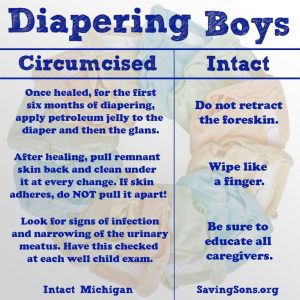 Circumcision Sydney of infants is usually done very early in a baby’s development. Many procedures performed at birth are now considered normal and are often performed by pediatric surgeons. Infant male Circumcision, also known as neonatal Circumcision, is now routinely done as a procedure for newborns up to 1 year of age, and males, females, teens and adults of any age can have it as well.
Circumcision Sydney of infants is usually done very early in a baby’s development. Many procedures performed at birth are now considered normal and are often performed by pediatric surgeons. Infant male Circumcision, also known as neonatal Circumcision, is now routinely done as a procedure for newborns up to 1 year of age, and males, females, teens and adults of any age can have it as well.
Like other medical procedures it can be done under local or general anesthesia. Anesthesia is rarely required until the third day following birth. The baby will probably sleep through the entire process. There may be some swelling, but it usually disappears within a few days. The baby will be healthy and in good condition when the operation is performed.
The routine circumcision of neonates is not done. These infants could be subject to complications such as infection or bleeding. Most newborns do not need to be circumcised, as the procedure is considered unsafe for their health. Male children who were circumcised in the fourth week of their life are not required by law to get another procedure until they are six weeks old. Only routine infant vaccines recommend circumcision for male babies. It is believed that prolonged exposure to infection could Circumcision Melbourne the chances of receiving the vaccine.
If they were breastfed, bottle-fed or had contact with HIV-infected partners in their fourth week of life, male infants and toddlers are less likely get HIV. Circumcision for HIV infected men reduced the risk of acquiring genital warts and herpes, while increasing the odds of avoiding prostate cancer. Circumcision may also reduce the risks of suffering from diabetes, osteoporosis, hypertension, kidney disorders, and decreased sperm count in men. Circumcision for HIV infected men may also reduce the risk of suffering from arthritis, urinary tract infections, and reduced risk of dying from AIDS.
You can either perform circumcision alone or with other medical interventions that enhance the pregnancy. The third to fifth week is the best time to circumcise a newborn. The ideal age to perform a surgical procedure on a newborn is between the sixth and eight weeks of life. Statistics show that approximately 90 percent of African American men have had circumcisions at some time in their lives. The best age to provide protection against infection for a neonate is between seven and nine week old.
The success rates of having a child circumcised at the appropriate age depend on many factors. These include the skill of surgeons, the experience and expertise of the professional performing the procedure, and the competence and experience the mothers of the child. This is why the number of successful circumcisions at each clinic can be a good indicator about the ability of the staff. If multiple births are performed at different clinics, more valid information can be obtained. It is possible to get more accurate information if multiple births are performed at one clinic.
Before a baby’s circumcision can be done, the foreskin must first be removed using scissors or a razor. This preparation process requires two people. One person must hold the baby’s skull in place, while the other applies pressure to the forehead to retract the foreskin. This is done with a clean cloth. One side of the cloth should be cut so that the doctor can access the baby’s head while he performs the actual procedure. This can be done with an electric clipper or razor blade.
After the preparations have been completed, the baby will be taken to the hospital. A volunteer nurse will supervise the procedure. This is where the doctor first appears. During the procedure, local pain medication is injected into your penis. About ten minutes later, the surgeon closes up the wound with bandage and releases the newborn into the care of the family. The Pollock Technique for infant circumcision has a higher success percentage than other methods.
